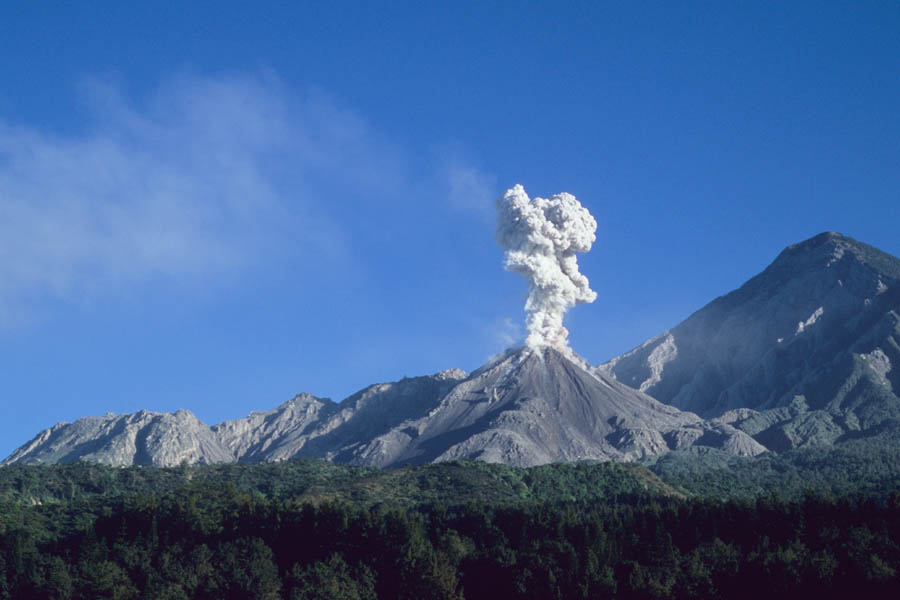Santiaguito Fieldwork
This wednesday, I will be starting three weeks of fieldwork in Guatemala. There I will be working with a group of fellow volcanologists and seismologists from the University of Liverpool. We are heading to the Santiaguito dome complex, one of the most active and fascinating volcanoes in the world.
Santiaguito on this blog before, but I thought I would rewrite it with a little update on its recent activity. Santiaguito is a lava dome complex that has been growing non-stop since 1922; an exceptionally long eruption for any kind of volcano. It is forming inside a crater created during a massive VEI 6 eruption of the Santa Maria volcano in 1902. The dome eruption has been accompanied by regular vulcanian explosions, lava flows, pyroclastic flows, and lahars. In May this year, Santiaguito experienced a partial dome collapse with large pyroclastic flows (some of which were really close) and lahars. A couple of the pyroclastic flows were captured in amazing videos which Erik Klemetti talks about here. Since then, a large lava flow has extended from the scar left behind by the collapse. The flow has been well documented by webcams and satellite thermal images. Immediately after the collapse, the regular explosions had stopped, but recently it appears that explosions have started again (see image below).
Edit: Shortly after this post was published, Rudiger Escobar Wolf got in touch with a small update on the situation at Santiaguito. It is still very serious, with the lava flow still advancing towards farm land. There are worries about the threat of pyroclastic flows coming from the front of the flow. The observatory for INSIVUMEH (the organisation which monitors volcanoes in Guatemala) is in the process of being relocated because pyroclastic flows came very close to the building.
So what is the aim of the fieldwork? Primarily, we will be setting up a network of geophysical instruments around the volcano. We will be deploying a number of seismometers, tiltmeters, and infrasound recorders around Santiaguito. All together, they are going to make up an experiment to help understand the inner workings of the system and how it links to surface activity. The instruments will be left for several months, after which we will have a huge amount of data to sift through and analyse! It's going to be big effort but it will provide a fascinating insight into such a unique eruption. The dome complex has been extensively studied before, one such expedition being documented by this great piece written by Benjamin Phillips. This 12 minute video by Jeffrey Johnson of Boise State University also gives a great idea of what this expedition will be like. Follow my twitter page or watch this blog for any updates on the progress of the trip. I can't wait to get there!
Santiaguito on this blog before, but I thought I would rewrite it with a little update on its recent activity. Santiaguito is a lava dome complex that has been growing non-stop since 1922; an exceptionally long eruption for any kind of volcano. It is forming inside a crater created during a massive VEI 6 eruption of the Santa Maria volcano in 1902. The dome eruption has been accompanied by regular vulcanian explosions, lava flows, pyroclastic flows, and lahars. In May this year, Santiaguito experienced a partial dome collapse with large pyroclastic flows (some of which were really close) and lahars. A couple of the pyroclastic flows were captured in amazing videos which Erik Klemetti talks about here. Since then, a large lava flow has extended from the scar left behind by the collapse. The flow has been well documented by webcams and satellite thermal images. Immediately after the collapse, the regular explosions had stopped, but recently it appears that explosions have started again (see image below).
Edit: Shortly after this post was published, Rudiger Escobar Wolf got in touch with a small update on the situation at Santiaguito. It is still very serious, with the lava flow still advancing towards farm land. There are worries about the threat of pyroclastic flows coming from the front of the flow. The observatory for INSIVUMEH (the organisation which monitors volcanoes in Guatemala) is in the process of being relocated because pyroclastic flows came very close to the building.
 |
| A recent explosion from the Caliente vent at Santiaguito, (Source: INSIVUMEH) |

Comments
Post a Comment